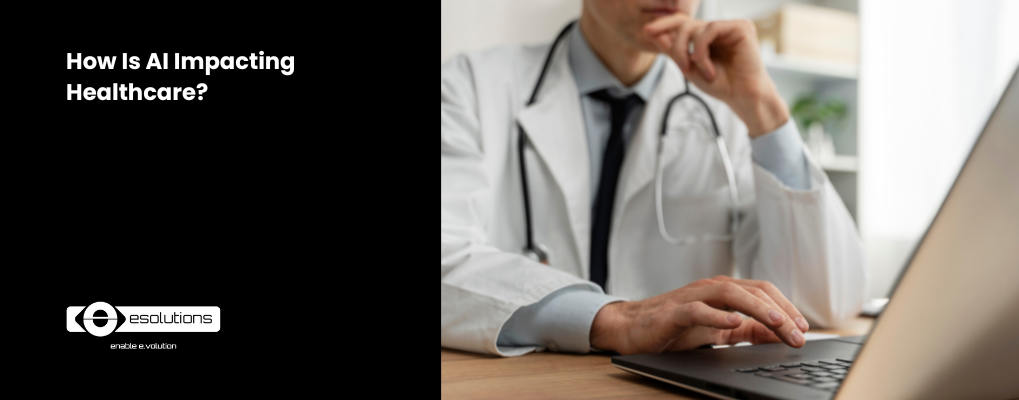
AI is everywhere - open the news and you’ll be met with stories about revolutionary tools transforming various industries. However, some sectors, like healthcare, face stricter regulations, making AI integration a more complex process. In this article, we will look at some trends, recent news, use cases, and important aspects to consider when implementing AI in the healthcare industry.
Imagine a doctor's appointment where administrative tasks fade into the background, allowing for a deeper patient connection. This vision is becoming a reality, along with the integration of AI into the day-to-day operations of medical institutions. Just this year, at the Big Data Week Bucharest Conference, we showcased a proof of concept for an AI-powered helper designed to optimize patient consultations.
Developed with our partners from Symfonia Softeh Plus, a company specializing in EHR software, this innovative tool assists physicians by efficiently analyzing past visits, and summarizing key information. The result? A significant reduction in administrative workloads, freeing doctors' time to focus more on their patients.
But let’s take a closer look at healthcare as a whole, the recent trends and news, and discuss some challenges and regulations specific to this industry.

The healthcare industry has witnessed many innovative trends. Numerous sources indicate a strong trend of collaborations between major technology companies (such as NVIDIA, Microsoft, Amazon, and Google Health) and healthcare organizations. These partnerships aim to implement AI systems for various functionalities, including streamlining administrative burdens, improving clinical efficiency, enhancing the patient experience, and developing diagnostic tools.
There is also an explosion of generative AI use cases in healthcare, including synthetic medical image generation, diagnostic assistance, personalized treatment, robotic surgery, patient monitoring, clinical trial optimization, and resource allocation.
AI-powered medical devices and robotics are also seeing a rise. At the end of 2024, the Food and Drug Administration had reviewed more than 1,000 AI devices, most designed to detect or triage specific health conditions. Now, medtech companies are talking about the use of broader AI tools that can analyze images, text, and other types of data across multiple contexts. Source
Harvard School for Public Health (which released a new program called AI in Health Care: From Strategies to Implementation, starting December 11), also predicts:
Here are some other notable healthcare-related AI news items from around the world:
The FDA has approved several AI-powered virtual health assistants designed to triage symptoms, schedule appointments, and provide personalized health advice. These assistants, much like our case study at Big Data Week Bucharest, use large language models and patient data to deliver accurate, context-aware support. This approval paves the way for broader adoption of AI in patient-facing roles, improving access to care and reducing clinician workload.
China requires all medical AI-generated content, such as diagnostic reports and patient communications, to be clearly labeled. This move promotes responsible AI usage in healthcare and addresses concerns about misinformation and patient safety.
The systems would allow them to forecast discharges at both specific wards within the hospital and at hospital-level. These innovations help reduce emergency department boarding, shorten length of stay, and improve staff efficiency.
As with any significant technological advancement, the integration of AI in healthcare has garnered a range of reactions from various demographics.
A recent survey of Millennials and Gen X respondents in the US revealed that more than 70% are interested in and would accept AI-assisted diagnosis products, especially as they juggle caring for both young children and aging parents simultaneously. As expected, younger generations are particularly more open to adopting emerging healthcare AI technologies than older generations, such as baby boomers, who expressed skepticism and concerns.
We are living in interesting times, and the trend to integrate AI and emerging technologies into healthcare is here to stay. Now let’s take a look at some of the most common challenges and best practices when discussing AI in healthcare.
The potential of AI in healthcare is undeniable, but its successful integration is not without significant hurdles. Addressing these challenges proactively is crucial for realizing AI's full benefits and ensuring equitable, safe, and effective deployment.

While challenges like the ones above remain, the overwhelming potential for positive impact, from personalized treatments to enhanced diagnostic accuracy, makes AI an indispensable tool for the future.
To ensure successful and responsible AI adoption, consider these key best practices:
The journey towards AI-powered healthcare begins with rapid prototyping and iterative development. Previously, testing new software functionalities or applications involved significant delays with traditional development methods. Now, AI-developed prototypes empower us to quickly engage with physicians, obtaining their immediate insights to determine an idea's viability far more rapidly.
Here are just a few things that you can test and get feedback quickly on:
By using AI to rapidly prototype ideas, healthcare institutions can gather crucial feedback from end-users (doctors, nurses, technicians) much earlier, and refine their AI solutions before committing to full-scale development.
***
What role do you envision AI playing in the next decade of healthcare? Let’s get in touch.